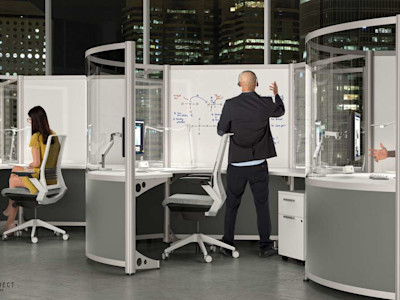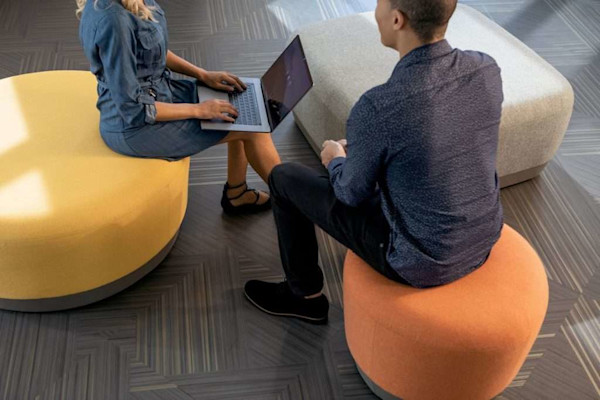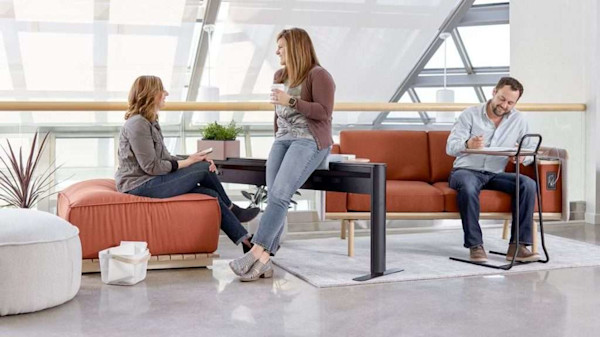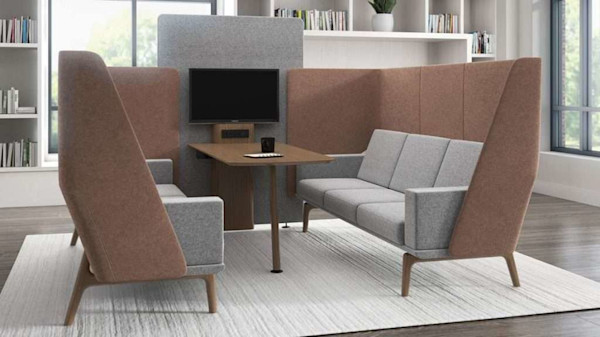What Employees Want in the Post-COVID Workplace

We are living in the forever after as the coronavirus continues to wreak havoc on the country. With each new surge companies are forced to once again reconsider what this 2-year long pandemic means for the future of work. Employees are leaving companies at an alarming rate, and those individuals that have stayed are burned out and unsure if returning to in-person work is what is best for them. Companies must switch their focus to the needs of their employees and what they really want in the post-COVID workplace.
The post-COVID Workplace Can't Be a Return to Normal
Employees don't want things to go back to normal. You can't bring your team back to a 9-5 office and fill their days with long hours in a dark cubicle and pointless meetings and expect an enthusiastic return. Many employees have seen the benefits of working from home and the flexibility it creates in their lives, and need this included in any return to work plan. A key to a successful return is listening to your team. What the return to work should look like is different for every organization. Before implementing strategies, timelines, and game plans for the post-COVID workplace, start with the needs of your team. Failure to do so creates discontent that will negatively affect retention and morale. Employees have the upper hand in the workplace. The struggle to retain talent is affecting all industries, but the successful post-COVID workplace is letting them navigate how the office will look. Talk to your team about what they disliked about the pre-pandemic office. What benefits did they love about remote work? Also, what stresses did working from home create, and how can a return to the office help? Smart employers have all the data available to create the best post-COVID workplace for their teams. The secret is to use it.
Prioritize Collaboration

Remote working provided perks for many, but for those employees who thrive on social interaction, the buzz and camaraderie of the office were greatly missed. Loneliness is a common issue that remote workers faced, and no amount of zoom meetings could fill the need for real and meaningful collaboration.
At this point in our work from home experience, organizations know that workers can complete most of their work at home.
Returning to the office should include regularly scheduled and supported spontaneous collaborative experiences. The long hours behind an isolated desk can be left behind. Within your office, create spaces where employees will naturally come together. The right layout will include areas where people can meet one on one and in larger groups. Incorporating technology hookups and desks for laptops will help accommodate your hybrid workers who are used to bringing their work with them wherever they go. Your employees have missed the feeling of really belonging to a team. Show that collaboration is a priority by designing your office with these spaces in mind.
Create Community

At this point in our work from home experience, organizations know that workers can complete most of their work at home. But there is something missing. Remote working simply can't provide the community and collaboration that is a large draw of many office buildings. A strong sense of community is one reason people have a desire to get back to the office. So how can you create a sense of community in your office? According to Gensler, realizing the future is hybrid is a key to a thriving community in the post-COVID workplace. Connection and collaboration must be available whether employees are working from home or in the office. A new integration into the hybrid workspace is connected kitchens or virtual front porches. These spaces have tech-enabled dashboards for remote workers, where teams can gather for a cup of coffee and catch up no matter where they are checking in from. These spaces add value and connection for your teams. And this is proving invaluable for employee retention. According to a recent report, over 50% of people leave their jobs because they don't have a sense of belonging. Companies have the opportunity now to make a real and lasting change to their office culture. Many people have gone through a great reevaluation as they have begun to take a look at what really means the most to them in life. For many, this means leaving their jobs. But those organizations that have prioritized community building and employee well-being have seen great retention results. According to Ben Tindale, of JLL Work Dynamics, "The office should offer an experience as comfortable as home, but with compelling, energetic spaces and a sense of community."
A Safe Post-COVID Workplace

The pandemic has put a focus on health and well-being in the office like never before. Increasingly, companies are designing open work areas with improved ventilation to mitigate the spread of sickness. Curved workstation cubicles with higher partitions can help prioritize social distancing and employee health. In this design, employees have the benefit of natural light and a visible connection with their teams, while in spaces that provide a break from the noise and increased protection. And while keeping employees protected from the continued threat of the coronavirus is important, mental health and physical health are issues that matter greatly to employees. And making efforts to prioritize mental and physical health can benefit your business as well. Healthier Generation says the keys are to encourage your employees to move more, eat well, and stress less. Focusing on wellness at work can increase productivity, decrease workplace accidents, and actually improve teamwork.
A Sense of Purpose
If you ask your employees what your company does and why they do it, could they answer? Does your team know the why behind their roles in your organization? Employees stay at jobs when their values align with the companies values. They find deeper happiness at work when they feel their daily tasks matter and how those tasks help the organization as a whole. Employees seek to bring meaning to their work and understand the contributions that are made to the organization. And in order to stay fully engaged, employees need to find this meaning in their day-to-day work. However, few businesses prioritize these important conversations with their teams about why their work matters.
Companies have the opportunity now to make a real and lasting change to their office culture.
From a practical standpoint, this sense of purpose boosts morale, innovation, and productivity. But for a business leader, creating a purpose-driven organization should have an even deeper meaning. We are facing a talent crisis. Employees are disengaged and transient. The demand for highly skilled employees is rising at a rapid pace, and the competition to recruit them is only getting more fierce. And after a period of time where employees had a chance to really reevaluate what matters to them, they are searching for purposeful companies. Companies that create solutions to big problems and prioritize the environment. Companies can share their purpose in all areas of their work, from leadership practices to company communications and recruitment strategies.
Things You Can't Have at Home

Lastly, if you want employees to return to the office, you have to provide things that aren't available in a typical home office. Broken connections on remote working video calls? Make sure the office offers stronger Wi-Fi and expanded technology options. Interrupted virtual at-home meetings with clients? Provide quiet meeting spaces with integrated technology. Zoom fatigue from attempts at collaborations? Provide comfortable and functional collaboration spaces for your team. Many found great perks to working from home, so make sure your office also recreates many of the things they loved about working from home without the added stress of the home environment. When you design your office layout with your employee's wants and needs as a top priority, you can create a space that incorporates the best elements of both worlds. Organizations that fail to make this a focus in the post-COVID workplace will struggle to retain and recruit high performers. Going back to working in the office may increase engagement for some. It may hinder it for others. And in the middle, there are those who seek the flexibility to have both worlds. But employers can create a workplace that accounts for the needs of workers no matter where they work from.
Visit StrongProject.com and start planning your post-COVID workplace today.
Modern Office Space Planning in the New Normal The Office Is More Like Home Sweet Home



